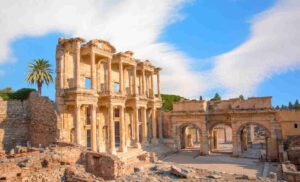Recently, in this same blog, we published a first article about what we call ‘live and first-person crafts’. That is, activities in which it is not only possible to buy traditional items made by local masters, but in many cases it is possible to learn the process and make your own piece. Pottery, jewelry or leather goods were some examples mentioned, which with Mandala Tours are within reach. But not all of them were there: handicrafts are such a current activity and in demand by tourists, that there are many other examples that we left out. Therefore, here we expand this post, with new proposals that we can bring to you.
Argan oil in Morocco, in local cooperatives
The argan tree(Argania spinosa) can be considered the national tree of Morocco, as it is native and endemic, growing naturally (and also cultivated) in the southwestern part of the country, especially in semi-deserts with calcareous soil. The oil extracted from its fruit has achieved great notoriety in the world thanks to its use by the cosmetic industry, trying to exploit the benefits it brings to the skin. However, its oil has many other uses, including as a fuel or even as a substitute for olive oil in certain dishes.
But what is important for what concerns us in this post is that its extraction and production system is a traditional craft, recognized as such by UNESCO, naming it Intangible Cultural Heritage of Humanity in 2014. In Mandala Tours we know rural cooperatives where this work is done, carried out by women, which is thus a boost to the development of depressed areas and a way of female labor inclusion. The surroundings of Essaouira, Marrakech or Agadir are some of the places where it is possible to discover this ancestral activity.
Mosaics in Madaba, epicenter of this art form
In Jordan, to speak of mosaics is to speak of Madaba, a city that reached great importance in Roman and Byzantine times . Byzantine times. These authentic works of art, usually of Christian religious character, have an enormous magnetism for tourists and cultural travelers, as some of them are truly unique, such as the Holy Land in the church of St. George.
But those who wish to go a step further and move from contemplation to action, will find mosaic workshops where the technique used centuries ago in their manufacture is taught. Masters in this art offer masterclasses of several hours in which they explain step by step how to make a mosaic, also providing the tools and raw materials, such as stones of different colors, adhesive and mesh, thus configuring any type of composition.
Ancient handicrafts in Egypt
If the mosaic is an ancient craft with much currency in Jordan, the same is true in Egypt: there are master craftsmen who can teach how to make items that were very common in ancient Egypt but are now obsolete due to the advent of other more modern technologies, but whose knowledge is a cultural attraction in itself.
One of the best examples is papyrus, the medium used for everyday writing. In Cairo, in fact, there is a museum dedicated to it, which, although not a museum as such, does organize educational workshops on the subject, as well as having the logical space for the sale of customizable papyrus.
And as with papyrus, argan or mosaics, there are more examples scattered throughout these and other countries in which Mandala Tours agencies operate, with the possibility of directing them to the little ones. So if you are interested in any of them or have another proposal, do not hesitate to contact us.





